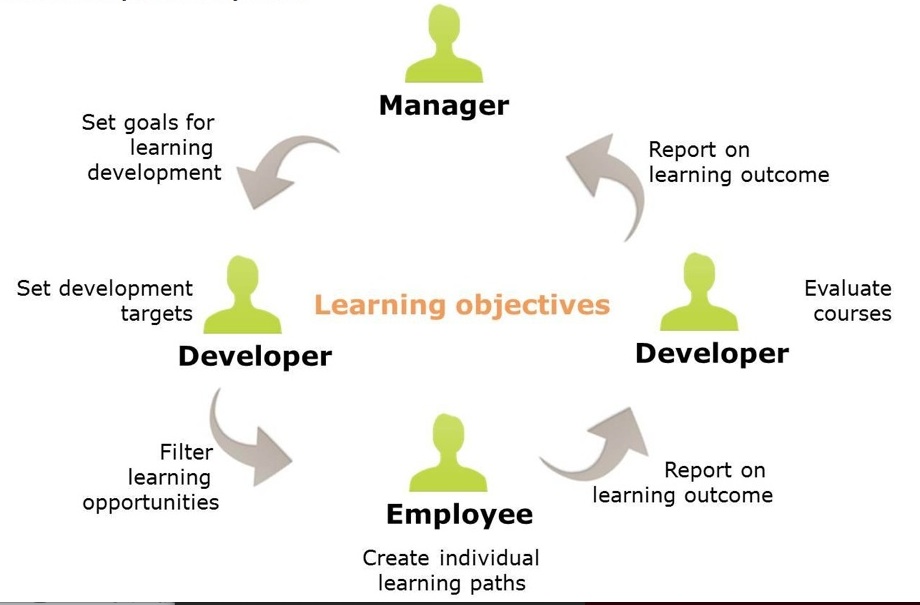Effective employee training is crucial when it comes to improving a company’s overall performance and growing a business. Only when you train your employees well will they be able to contribute to your company’s success and help your organization become profitable.
One of the best and most effective ways to train your employees is to provide them with the option of e-learning. Reason? It helps them improve their skills quickly, learn at their own pace, know their gap areas and address them, learn without hampering work, and so on.
Although e-learning makes sense in today’s fast-paced world of business, it is key to ensure it is part of an effective training strategy. Keeping in mind that creating a training strategy requires hard work, here are some of the common e-learning roadblocks course creators should be aware of when creating a training strategy.
1. Lack of Clearly Defined Objectives
In order for your training strategy to be effective and for your e-learning course to deliver real and positive results, you need to identify clear objectives you can measure. Without identifying clear objectives, you will not be able to know whether your training will lead to actual improvements in the performance of your employees, and thereby in your overall business.
Clear objectives mean you should state exactly what your trainees will be able to do upon the course completion, instead of telling them what they will learn or understand. Focus on what exactly you want to accomplish with your training and develop a set of e-learning objectives that will lead to actionable results.
Outlining the objectives will ensure you get off your training on the right foot and that you will successfully reach your goals. However, make sure you can measure the results, so define the appropriate success metrics that will help you evaluate the training.

2. Creating Too Much Content
It can be tempting to include literally everything your trainees may find useful in your e-learning course. When it comes to your own business, it can be tough to be objective, especially if there are many stakeholders who want to have a say in the creation of your training strategy, and they want all of their topics to be included.
What this leads to is an e-learning course that contains too much information and is downright cluttered. Too much content can create cognitive overload and will not result in effective training because providing your learners with too much information at once will prevent them from retaining key pieces of data. You won’t be able to grab their attention and engage them properly in the training.
You need to focus clearly on your objectives and the skills you want your employees to acquire or improve. Then work on providing content that really needs to be in the course. You should create modules with small, easily digestible chunks of the most relevant information your employees need to learn.
3. Not Focusing on Customized E-Learning Courses
Instead of using generic e-learning courses, you should customize them to fit your learners’ needs because only then will it be effective. Ask your employees for some input and learn what kind of content they need in order to improve their skills.
Once you do that, think about the best ways to deliver that content and cater your e-learning course to your learners’ needs. Otherwise, they may not feel motivated to complete the course; a sense of detachment may plague them.
You also should create your course in a way that it doesn’t force every trainee to follow the same path. For instance, if a learner is familiar with a particular topic, he or she should be able to skip it and proceed with learning new stuff, instead of wasting precious time on going through something he or she already knows. Therefore, customize your e-learning courses so not all trainees need to do exercises or whatever else in the same order and at the same pace.
4. Not Enabling Collaboration
Enabling trainees to collaborate will motivate them more and engage them in the training. If you include exercises that support group collaboration, such as virtual scenarios and group chats in real time, you will add a social component that will significantly improve the effectiveness of the training.
Therefore, make sure you encourage your learners to work together through the entire training by integrating various collaboration features that will enable them to communicate in real time and benefit from one another.
Implementing interactive features also will increase their engagement and make training more fun. When they are having fun while learning, it won’t exactly feel like learning, which will lead to maximum knowledge retention.
5. Not Using an Learning Management System (LMS)
Having a good and reliable LMS in place will help trainees improve their skills faster, as they will be able to access e-learning material 24/7. Also, you will be able to easily assess them and measure the effectiveness of your training, as an online e-learning software will provide you with relevant reports and evaluations.
With an online e-learning software in place, not only will you be able to easily create your e-learning courses, but you will be able to monitor the progress of your trainees in real time. That way, you will know all of their strengths and weaknesses, so you can jump in when someone needs additional help or implement some adjustments to your course to make it more effective.
If you manage to avoid all of the above-mentioned e-learning roadblocks, you will create an effective training strategy that will open the door to greater opportunities for growth.
Kamy Anderson is an ed-tech enthusiast with a passion for writing on emerging technologies in the areas of corporate training and education. He is an expert in learning management system and elearning authoring tools and currently is associated with ProProfs.




